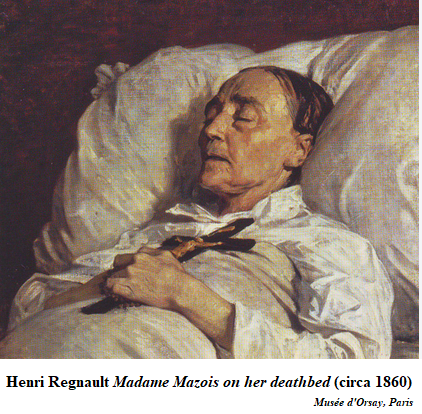
By Michael Dunn
In just four years, four States have passed ‘voluntary assisted dying’ laws to permit doctors to help terminally ill patients kill themselves. In the two remaining States, Queensland and NSW, similar draft Bills await debate. ‘Dying with dignity’ rallies the supporters of these laws. Is it dignified to kill oneself? Is dignity lost in struggling on in pain and suffering? The story of an elderly woman who died from Alzheimer’s dementia offers some answers to these questions.
Of Alzheimer’s, an American doctor wrote more than thirty years ago, in a popular book about dying: ‘There is no dignity in this kind of death’[1]. If you had chanced to walk into the elderly woman’s room, when she lay dying, you would have seen her wasted body unable to eat, drink or move herself, heard her speechless, ragged breathing, and looked at her static eyes. No dignity was on display.
Five years earlier, she lost her wedding and engagement rings. She had worn them every day of her married life. The loss distressed her. They were precious gifts from her husband and a part of who she was. She suffered an indignity. People would look at her left hand and see her as unmarried, or as something worse if they knew she had a husband whose rings she had discarded. Her husband, though often quick to anger, suffered the loss with surprising forbearance, as though extending his dignity to her, to compensate her loss.
Time passed, and she noticed how much longer and more complicated the routines of her life became. She had not read yesterday’s newspaper by the time today’s arrived. She had to go the hairdresser’s just when she was supposed to be making a family lunch. At afternoon tea, her leaden cake bore witness to the ingredient she forgot. Odds and ends of food inhabited the fridge and supermarket plastic bags ran riot in the garage. Disorder was creeping into the home. Suddenly, one Sunday lunch she passed out in her chair. In hospital, they cured the infection that overcame her, but her mind grew noticeably worse. Still competent, she gave her husband and her son powers of attorney and guardianship. This gift of trust, made as her own strength weakened, bound her husband and her son together in a duty for her care, a dignified and elevated role.
Her husband’s spirit steadied her, but his physical strength declined. Some months later, he suddenly became fevered and delirious. She called the ambulance, and they took him off to hospital for treatment. Being alone unbalanced her. Her phone calls became confused. When going out, she kept forgetting her keys and her next-door neighbour had to rescue her. The couple had to move into a care home. She could no longer fill her office as keeper of the home. She lost another dignity.
A photo taken on the moving day shows her, grave and seated, in her strange new room. She grieved at what was happening, but did not fight against it. She missed the freedom and the power to cook and clean. The organised activities and outings meant nothing to her. She wandered, sometimes going into other people’s rooms and taking clothes to wash. One Saturday she wandered out the entrance hall, and ended up confused but in the park she loved to walk in near her former home. A passer-by took her to her former next door neighbour’s place, and the neighbour drove her back to the care home. From that day on, they marked her as a ‘flight risk’, a potential escapee, another loss of standing.
The dignified person bears themselves in a manner that fits the occasion. Every six weeks or so, the family went out to a restaurant. At first, she took care over her appearance and put on her good clothes. Then dressing became confusing, and she mixed her clothes and wore two skirts at once. When going out, her son became her dresser, restoring the dignity she could not put on for herself. A year or so later, going to a restaurant disoriented her so much she could not eat her food. In time, even in the care home, she needed to be fed with all her meals, like a young child.
Her conversation splintered into fragments — some light and meaningful, others random or irrelevant. She soon stopped speaking altogether, a daunting silence that turned away her visitors. Her son recalled the story of a woman in a coma and her daughter who read aloud to her. When the coma ended, she told her daughter that the reading was the thing that kept her sane. So the son read aloud the poems his mother used to read him, and her husband read her stories which he always did so well. The reading broke the silence with a laugh or smile of recognition. She seemed lost to the world at large, but stayed present to her family and her carers. They gave her what she needed — the rhythms of her language, stories in which to dwell and a regularity of life.
The brain instructs the body, so as it perishes the body fails. Even in her eighties, she had walked everywhere. Seeing her smile could not repress the jolt of noticing a carer on each side walking her along the hall. Some months later, she could not walk at all, and spent all day in a chair and bed combined, made for those who cannot walk or hold themselves erect — a ‘princess chair’ they call it to dignify a sad decay. At the end, her epiglottis, guardian of the windpipe, no longer knew the difference between air and food. She could no longer eat or drink without the risk of catastrophic choking.
The vigil began. Morphine eased her pain, gel soothed the dryness of her mouth and nurses turned her body. Her husband and her son watched and waited. On the sixth day, her husband asked: ’Does she even know I’m here?’ ‘Yes’, the senior nurse replied. ‘How do you know?’ he asked askance. ‘When you spoke, the rhythm of her breathing changed and she became relaxed’, and so it had. On the eighth day, in the morning, she looked at her husband and her son with a glance they knew was hers. In the silence one can miss these little signs the dying person gives to those they love.
Her suffering and destitution gave birth to a community of care and dignity around her. When lost, her neighbour took her in and drove her home. In care, they nursed and washed and fed her. Her husband loved and cherished her, as he promised at their wedding. Her son sought to honour her and guard her interests. A volunteer brought in a friendly dog for her to stroke. A man who cleaned toilets and bathrooms said: ‘The residents are our friends; although we are sad, because we know we will lose them’. In the last days of her life, individual carers would be found sitting quietly with her, sometimes holding her hand.
Now, a darker and despondent care exists for those whose illnesses are terminal. Doctors may prescribe and even carry out the fatal steps to kill their patients, if those patients ask them. Subject to detailed restrictions and procedures, the laws declare this is no crime. Where the laws mention ‘suicide’, it is only to declare its non-existence in this gloomy form of care. The death certificate issued to the family and executor must not record the patient died by their own hand, or with ‘assistance’, but from the disease that was expected to kill them. This untruth ‘protects the privacy of the person (and possibly their family too)’[2]. This privacy also hides the doctor’s role. Dignity means ‘worthy of honour and praise’. Dignified acts are known and celebrated, not kept in shame and secret from the public record.
Helping someone die begins with seeing suffering and wanting it to end. The vet shows mercy who kills a badly wounded animal when no treatment will succeed. The doctor shows mercy who gives morphine to the patient to relieve their pain, despite foreseeing, though not intending, that the drug itself will hasten their patient’s death. If the patient pleads for death and is dying anyway, the extra step of helping of them might seem merciful as well. This extra, fatal step abandons what is just and true. Death is not a personal entitlement. Life arrives without permission and gives no warranties against illness, pain or suffering. We cannot judge our own life’s worth. We have no right to implicate a doctor in a pact of suicide.
Nobody knows in advance what strength they may find in a contest. In many cases, those who seek ‘assisted dying’ do so out of fear. Tasmanian law acknowledges this fact. It says a person is suffering intolerably if, among other things, they persistently suffer from ‘anticipation of the suffering, or expectation, based on medical advice’[3]. Agony, against which the body fights, comes from the Greek agonia — a struggle for victory. Fear and anguish are the enemies of life that urge sufferers to kill themselves. We are not competent to judge those who kill themselves, but feel a sadness in the life not fully lived. We dignify the runner that completes the race but dies exhausted at its end; we sorrow for the one who quits mid-course. Suicide silences life’s calling and shuts the book, abandons hope and blows out the candle.
Healing and relief from pain, and a promise to do no harm, united the community of medicine. From specialists to cleaners, everyone assumed a unity of purpose. Together, they pushed death back and moderated pain. Having done so much together, this unity, once reserved exclusively for healing, is broken — causing death is now declared a healthcare practice. A new principality is born, an independent sphere of power, carved out for helping people to their deaths. It brings within its scope doctors, nurses, psychiatrists, pharmacists, those who issue, receive and dispose of fatal drugs, and even interpreters for non-English speaking patients. Public servants issue permits, register practitioners, authorise their training and organise a community of assisted dying practice[4]. Advocates of assisted death get appointed to its boards and offices. Over the past four years, each State has broadly followed the model in Victoria, from 2017, but with some variations that generally made the rules less strict in various ways[5]. The downward slope has slipped.
Let us return to the woman dying with dementia. In her agony, she struggled tenaciously for victory over death. At times she sank so low, her death seemed imminent and then she struggled up for air again. To share in someone’s agony takes on a share of their distress, of their sinking down and surfacing again. Why could she not depart in peace? Could a nurse or doctor help her death along and spare her struggle and the grief of those who mourn? Sharing in distress can confuse one’s motivation. For whom is mercy truly sought: the patient or the keeper of the vigil? The nurses and the doctor owe their duty to the patient, and never, until ‘assisted dying’ was made law, could seek the patient’s death. So they saved the keepers of the vigil from complicity in death. Nobody knows why the dying person struggles on — perhaps they have some task to finish, perhaps they want to show us something or perhaps their destination is not quite ready.
Before dawn on the tenth day, the woman died. The son took the news to his father. The father hugged his son, and all that had ever divided them was reconciled. They went to her room to see her. She looked serene at last. Her husband, not a churchgoer, recited the Lord’s Prayer. A disengaged observer might only see her losses, and say she lost her dignity. Those who loved and cared for her saw much more, because they knew her ways and saw her signs. They lent her strength and dignity which she returned to them in full, a thing no suicide could ever do.
Complete Article ↪HERE↩!












